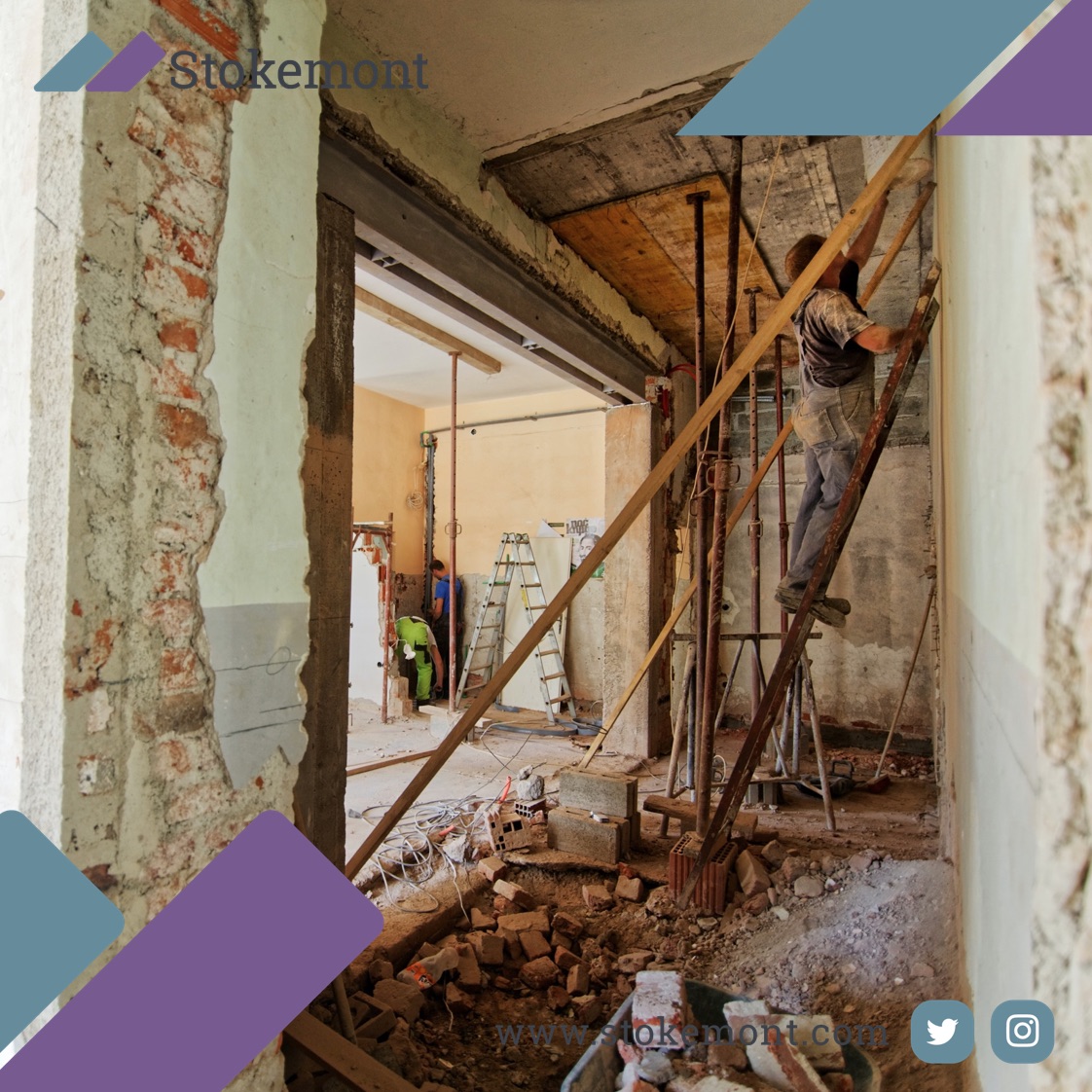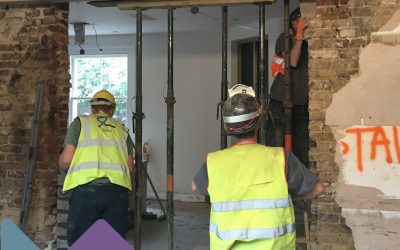Thank you for you clicking on today’s property surveying blogpost. Through our blogposts we aim to combat and address some of the more complicated and tricky parts of property surveying that we undertake here at Stokemont.
Our team of surveyors are based in Marylebone, London and we are very proud to assist both private clients and large companies with their surveying needs.
One of the services we provide on a regular basis is in relation to licence for alterations to both freeholders and leaseholders alike. Licence for alterations come into play if a leaseholder of a property, also commonly referred to as the tenant, is planning on undertaking alteration works to their property. Under the terms of their lease, they will require consent and sign off from their freeholder, also commonly referred to as the landlord.
A consent is very much dependent upon the type of leasehold alterations covenant and clause that is in place and wording in the lease itself.
Generally speaking there are going to be three variations, or types, of leasehold alterations’ clauses that a prevalent throughout all leases in England & Wales:
Leasehold Alterations Covenants
We are now going to be taking a look at these leasehold alterations covenants, in order to best advise you, so you are fully aware as to what type of alterations covenant is set-out within your lease.
Fully Qualified Covenant
The first leaseholder alterations we are going to be looking at is a fully qualified covenant. This is the most favourable type of alterations covenant a leaseholder can find within their lease.
Essentially, this alterations covenant means the leaseholder will be able to undertake their proposed alterations work to their demise/flat/property and, importantly, the freeholder is not going to be able to unreasonably refuse or withhold consent for a leaseholder’s proposed works.
In layman’s terms, this effectively means that, so long as the leaseholder goes through the necessary procedures and protocols required, which usually means providing their freeholder with information in respect of the works, from a legal perspective the freeholder cannot refuse the leaseholder’s proposed work and is duty bound to provide their consent. As a leaseholder this is going to be the best possible outcome that your lease wording can contain. If you were to compare this to a traffic light system, this would very much be a green light.
Qualified Covenant
A qualified covenant is similar to a fully qualified covenant, however, importantly the wording, setting out that the freeholder cannot unreasonably withhold their consent, will be omitted. From a legal perspective, this means the freeholder has the decision and control to grant a licence for alterations at their disposal.
The freeholder can not only decide if they want to allow the leaseholder to undertake the works, they can also stipulate any requirements, provisions, premiums, or other matters governing that consent. Qualified covenants are a tricky one for leaseholders to get past. In many cases, freeholders will take legal advice from solicitors, or professional advice from RICS registered surveyors, with such advice setting out that it is conventionally and actually quite normal for freeholders to request and charge a licence premium, payment, or cost, in order for a leaseholder to be granted a licence for alterations.
Again, in layman’s terms, this effectively means the freeholder can legally and rightfully charge a fee in order to grant a leaseholder their written and statutory consent to progress their progressed works to their demise/flat/property. This can often come as a shock to leaseholders, as they will be unprepared for this, meaning they can find themselves having to dig further into their pockets to cover the proposed cost of the works. In some cases, the works no longer proving to be economically viable and significantly thwarting their plans.
If you were to compare this to a traffic light, this would very much be an orange/amber outcome. If you are unlucky enough to have a qualified covenant within your lease, here at Stokemont, we would recommend you take advice sooner rather than later and, furthermore, we would advise you do not incur too much cost in respect of surveyor’s, architect’s or structural engineer’s fees as, ultimately, you could go through all the procedures in the best possible manner, only for your freeholder to refuse consent, or provide a licence for alterations with a significant financial level attached.
Absolute Covenant
The final leasehold alterations covenant we are going to look at is an absolute alterations covenant. An absolute alterations covenant is by its nature highly restrictive. In effective, the wording of the lease will set-out that the leaseholder does not have the legal right to undertake alteration works to their demise/flat/property. This can come as a significant surprise to many leaseholders, as they will rightfully consider their property theirs and will want to have free reign over any creative design and alterations they have in mind.
Here with Stokemont we do not disagree with standpoint and in fact actually find alterations covenants to be highly restrictive and altogether outdated. That being said, they are nonetheless statute and are written into the law and a lease. This means a leaseholder will have to comply with the alterations covenant and, in all likelihood, are going to have to scrap the idea of any planned alterations.
An absolute covenant is also not one that freeholders are likely to negotiate, discuss, or entertain the idea of deviating from the wording of the lease. Comparing this to a traffic light, as you can imagine, this very much going to be red light.
Recent case law has significantly changed the way in which freeholders view alterations covenants and, in particular, absolute covenants. The Duval v Randolph Crescent Ltd case set-out that a leaseholder wanted to undertake alterations works, went through the necessary procedures to do so with their freeholder providing them a licence for alterations. The leaseholder was bound by an absolute covenant within their lease, with the freeholder choosing to liberally depart from the lease wording and granting the leaseholder permission for their works.
Another leaseholder within the same building then pursued the freeholder for departing from the wording of the lease, with the Court upholding the second leaseholder’s claim and set-out that the freeholder did not have the legal right to depart from the lease wording. This case law was very much a bombshell to those lessees who have an absolute covenant within their lease, effectively meaning very few, if any, freeholders are now likely to entertain any discussions on alteration when there is an absolute covenant in place within a lease.
Here at Stokemont, we assist both freeholders and leaseholders alike with their licence for alterations requirements. Over the years we have carried out straightforward work from changing floor coverings, additions of kitchens/bathrooms, through to more structurally complex works, such as removal of structural walls, structural design change and the like.
We have built-up a tried and tested protocol for best handling licence for alterations procedures and, if you would like to discuss your licence for alterations options with our team of experienced and qualified RICS registered surveyors, please feel free to give us a call today and we will be more than happy to assist and advise you.
A service that we happily provide here at Stokemont is the opportunity for a leaseholder or freeholder to send in their lease, for one of our RICS registered surveyors to review and confirm what type of alterations covenant is in place. There is no cost for this service, the premise being that it will best advise the freeholder or leaseholder, ensuring the necessary advice is given at that juncture.
If you would like to take us up on this offer, please get in touch via the contact page of our website, providing a copy of the lease and, ideally, plans for the proposed works, but if these are not available you can always give a short description of them. We will then review the lease and plans and ping over some advice in this regard; our surveyors will be more than happy to assist and advise.




